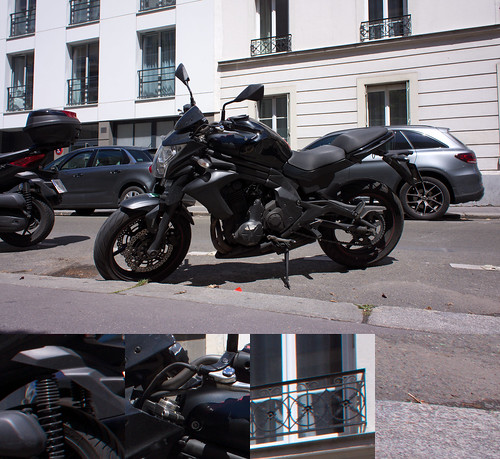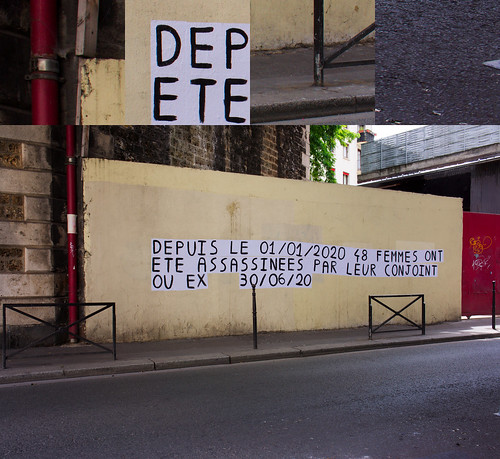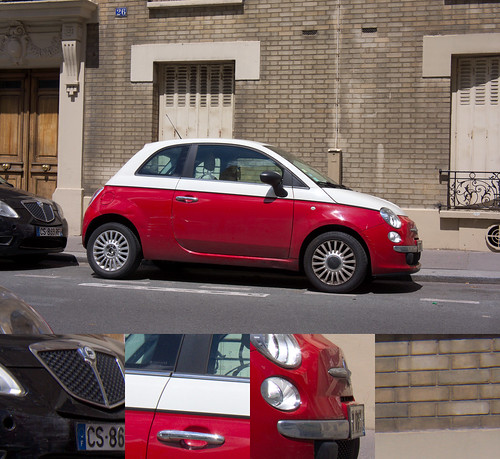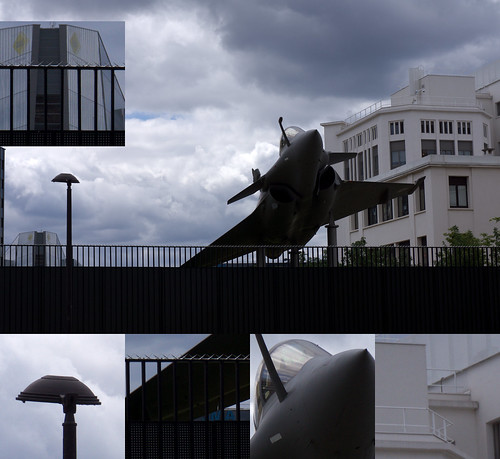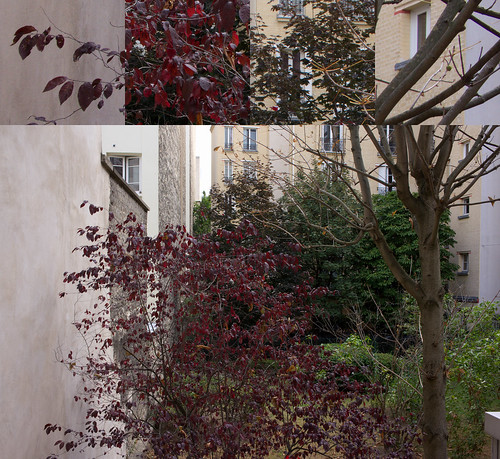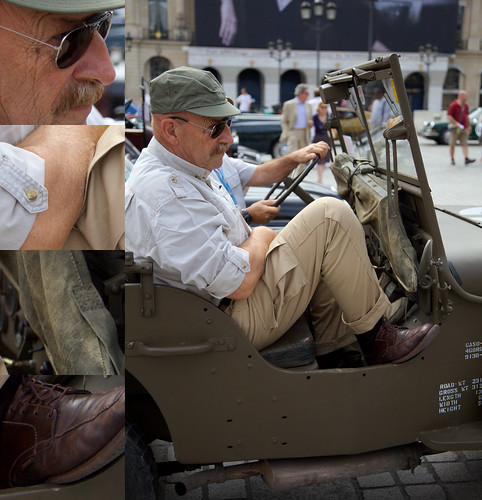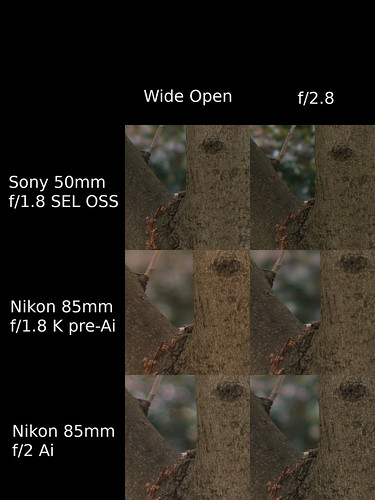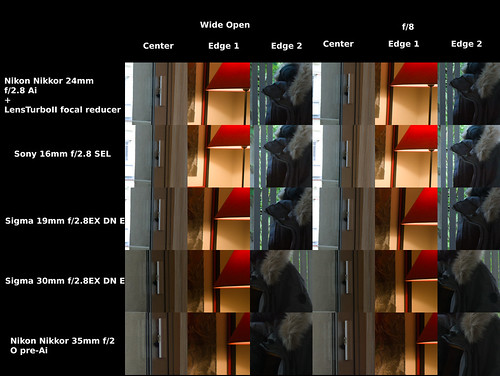Again, after looking at "Capture Sharpen" in RawTherapee and seeing how it can clean up an image, and after taking a look at images that come from a system that has a strong anti-aliasing (AA) filter (for which "Capture Sharpen" was made for) and a system with a weak AA filter (for which "Capture Sharpen" might not have been designed for, but might have an influence on), I thought I'd have another look at a known "horrible" kitlens and see how it looks over its zoom range to see if there are any "sweet" spots in the focal length range, and if "Capture Sharpen" might work well enough to remove optical defects.
Setup -
- Using a Sony NEX7, one each image from
- Sony 18-55mm f/3.5-5.6 SEL OSS
- Shot at various focal lengths
- Shot at f/9
- Process in RawTherapee
- Lens Corrections
- chromatic aberrations
- field distortions
- "Auto Levels"
- Set "Curves" black to the bottom end of the image's histogram
- "Capture Sharpen"
- Pull 100percent resolution 500x500pixel sections from the image and display them along with a down-rez'd copy of the original image
Images -
[If you click on the following images and then select full-resolution versions of these images you will be able to see differences between the photos]
Starting with a Sony "el-cheap-o piece-o-crap" 18-55mm kit lens image at 18mm -
At 24mm -
At 32mm -
At 55mm -
Comments -
Sony got beat up pretty badly by some writers about the image quality of the 18-55mm f/3.5-5.6 SEL OSS. I remember reading an article where the photographer felt his Sony NEX-7 with this kit-lens mounted on it was useless. His claim was that it took a very sharp lens to "wake up" the NEX-7's potential.
Because of this man's comments, for many years I've avoided using the optic for anything "serious." It was a fun "kicking around lens", but that was the farthest I'd go. Over the years I've found myself using fixed focal-length lenses as a way to avoid spending "serious money" on Zeiss or higher-end Sony zoom e-mount lenses.
Just a few months ago a friend sent me a photograph of a pretty Ducati 750GT that was at a show up in Washington state somewhere. I was blown away by the image. The clarity, the resolution, and the colors were just drop-dead gorgeous. I had to ask him which lens he'd used to make the photo, so he sent a full-rez version where I could read the EXIF information. Yes. You guessed it. He'd used this super-cheap super-horrible kit-zoom.
Some people might feel shooting anything between f/8 and f/11 or f/13 is too limiting. Certainly fixed focal length and more costly zoom lenses can perform better wide open. But if a person finds they can live with shooting at a zoom-lens' best apertures, there will be nothing finer, regardless of cost, regardless of manufacturer.
